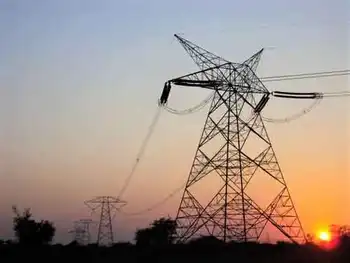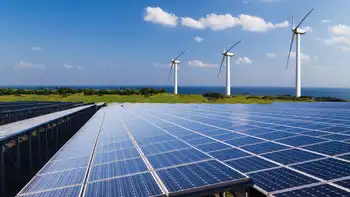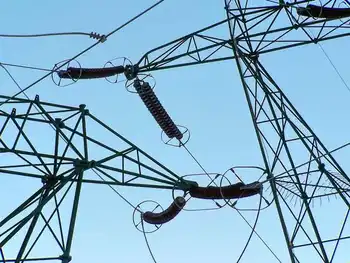Power to the people – with pellets
By Globe and Mail
High Voltage Maintenance Training Online
Our customized live online or in‑person group training can be delivered to your staff at your location.

- Live Online
- 12 hours Instructor-led
- Group Training Available
Canada, in other words, exports most of its wood pellet production, some of it to Sweden. The question is: Why? The answer is simple. Europeans are far ahead of Canadians in exploiting (according to the U.S. Environmental Protection Agency) "one of the cleanest-burning, most-renewable energy sources in the world."
Technically, wood pellets are amazing things. Manufactured from sawmill waste (mostly sawdust and shavings), they produce heat and electrical power at less cost than fossil fuels, require no cutting down of trees, support domestic economies, emit zero particulates, are fully "Kyoto-compliant" - and contain no artificial additives. (Compressed into tiny, pencil-thin pieces of wood under high temperatures, pellet technology needs no glue to hold them together.)
Europe has adopted advanced wood pellet technology in a big way.
Finland's production of pellets reached 330,000 tons in 2007, an increase of 70 per cent from 2005. The country expects to hit one million tons a year within the next two years. Germany's production (900,000 tons a year) will increase this year alone by 30 per cent. Russia's production has risen from 50,000 tons in 2005 to 550,000 in 2007.
Europe's consumption of wood pellets now exceeds six million tons a year - three times North American consumption. (Vapo, the biggest pellet producer in Finland, says 400,000 tons of pellets a year generate electricity for 100,000 detached homes.)
In its March issue, Renewable Energy World magazine reports that Upper (northern) Austria, a region with 1.4 million people, now gets 40 per cent of its home heating from renewable energy, mostly wood pellets. The region's energy agency co-ordinates the operation of 148 private pellet companies with 4,500 employees and revenues of €1.6-billion ($2.6-billion). The European Union expects Europe's pellet industry to create 300,000 new jobs in the next decade.
A pellet-fuelled central heating system can completely replace oil or gas furnaces - as they have, for example, for more than 800,000 Italian homeowners. These systems are fully automated, moving pellets from storage bin to furnace as directed by the homeowner's thermostat. Typically, in Europe, a tanker truck fills up the backyard storage bin once or twice a year in a convenient, dust-free delivery service. The homeowner needs only remove residual ash from time to time - three ounces per 40 pounds of pellets (ash that many people spread in their gardens). Otherwise, pellet-heat requires no manual labour.
But European countries, more and more, are using wood pellets to generate electricity, especially to substitute for coal in large power plants. Belgium, the Netherlands and Britain all have such operations - helping to supply heat and light to millions of homes. These plants consume enormous quantities of pellets, the supply of which eventually will be limited. When you run out of waste wood, you run out of pellets. Thus the public policy question is whether to allot pellets primarily to residential purposes or primarily to industrial purposes. The world is still a long way from "peak pellet" but temporary, regional shortages can send prices skyrocketing from time to time - much, for that matter, like oil.
Nevertheless, wood pellet biomass makes an important contribution to the supply of renewable energy in Europe. Stavros Dimas, Environmental Commissioner of the European Union, reports that 11,500 biomass installations have generated 260 million tons of carbon dioxide credits. The EU now supplies 4 per cent of its electricity from wood waste - and expects this percentage to double by the end of 2010.
Ontario is far, far behind. The province did call last year for "expressions of interest" from companies interested in getting supplies of wood wastes to exploit pellet technology. This belated, faint-hearted initiative aside, the province has failed to exploit pellet technology - an assertion inadvertently documented by an Ontario Power Generation (OPG) manager who told an energy conference last year that the province's major power utility only started to test biomass (in a single coal-fired plant) in 2007.
OPG has since conducted "aggressive testing programs" of wood pellets in all its power plants - with good results. "We can't believe," the OPG manager said in a report, "how easy it was." This is a thoroughly embarrassing confession, placing the wood-rich province a decade or more behind Europe.
One Canadian study, indicates that 70 per cent of the money that people and governments spend on wood pellet heat stays within the region - compared with 10 per cent of the money they spend on oil heat. Every province could profit from this finding but Ontario could profit the most.
The economic crises at GM and Chrysler couldn't be averted. The economic crisis in Ontario's forest industry - starving amid plenty - is optional.











